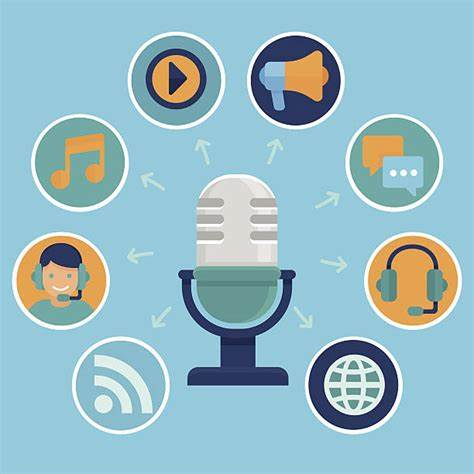“Lend me your ears!”
When the first podcasts debuted in 2005, who would have thought the format would grow into the juggernaut it is today? As of 2018, there were more than 525,000 active podcasts heard by 72 million people on a weekly basis. And these numbers continue to grow in 2019.
Why Do We Listen?
What makes podcasts so appealing and alluring to listeners? One can argue that it is simply more convenient, as you can listen on the go instead of having to park yourself in front of a screen. It’s also so easy to access podcasts these days, with our smart phones and smart speakers everywhere. We have really seen the prevalence of podcasts increase over the past several years due to this uptick in audio technology innovation.
Or perhaps it’s that this medium just resonates more. The spoken word and oral storytelling have been powerful since the beginning of human history, so this is simply a natural extension. Scientific studies have even linked audio learning with brain stimulation and addictive effects. “Audio is one of the most intimate forms of media because you are constantly building your own images of the story in your mind and you’re creating your own production,” Emma Rodero, a communications professor at the Pompeu Fabra University in Barcelona, told The Atlantic.
Benefit to Advertisers
Whatever the reason, the explosion of popularity in this field offers advertisers a variety of unique opportunities. Podcast advertising revenue totaled more than $250 million in 2017, a figure that is expected to grow by more than 110% by 2020.
Why? There is a podcast devoted to nearly every topic under the sun. These niche programs provide easy targets for brands that can be sure they are connecting with the right audiences. An IAB and Edison Research study found that 65% of participants said they are more willing to consider products and services after learning about them on podcasts. In addition, 44% of podcast listeners fall into the 18-34 demographic, always coveted by marketers.
In addition, there is often a strong connection built between podcast hosts and their listeners. The listening experience becomes personal and the audience begins to place a certain amount of trust in the host’s opinions and expertise. For this reason, many advertisers prefer to use host-read ads that are “baked-in” to the content. Whether the host reads scripted copy or ad-libs with his/her personal testimonial, it lends the product an air of credibility that is hard to replicate otherwise. Even when the advertised product does not relate to the podcast topic, the audience is more apt to listen to the commercial and not skip through. Midroll Media’s Chief Business Development Officer Lex Friedman, says “When (a host) takes a break to voice an ad, it’s much less jarring of an interruption… It sounds like a natural extension of the show.”
Challenges to Overcome
Some brands are even creating their own podcasts or sponsoring entire episodes of other podcasts in order to avoid ad skipping. This kind of ingenuity is great, but there are still some hurdles to overcome.
There is another method of incorporating ads into a podcast – dynamic insertion. This is when ads are inserted through an ad server and inserted within the content on demand. In some situations, this is a better option than baked-in ads, like if an ad is time-sensitive or if the brand wants more specific targeting. It doesn’t have to live within the podcast forever. However, use of this method is not widespread yet.
Another obstacle comes in the measurement of podcast success. In recent years, companies like Apple have made some strides in tracking user metrics and behaviors, but there is still a lack of precision. While download numbers are certainly good indicators of performance, it is still sometimes hard to know whether the whole episode has been listened to, or where the listener may have dropped off. One way to help combat this problem is to include a unique, easy to remember vanity URL or promo code to in order to be able to attribute ads to conversions.
What Next?
With audio technology and listening options ever expanding, it would only be natural to see a surge in the amount of podcasts offered and the amount of time people are tuning in. It is bound to become more of a part of our daily lives as audio technology continues to dominate. According to Jennifer Kavanagh, SVP Marketing and Media at the Philadelphia Eagles, “Audio as a medium will grow, and as it grows, it will give rise to earfluence.” With these positive predictions, it’s not a bad idea for marketers to take a look a their strategies and figure out where they can find a place in this blossoming arena.



